- You are here:
- Home »
- Mattresses
- » Best Firm Memory Foam Mattress
Best Firm Memory Foam Mattress
You already know how important it is to get a good night's rest. Many factors are at play to ensure you get the sleep you need, and one of the most vital factors is your mattress. Choosing the right bed comes down to more than what feels good when you lay down. You may actually need a firmer mattress than you think.
To figure out what is the best firm memory foam mattress, you need to consider those many factors, and whether it's right for you. Then you'll want to consider comfort level, temperature of mattress, and whether you're looking for a traditional feel of memory foam (that hugging, cradling sensation). Arm yourself with the knowledge first, and then read through the reviews to find the best rated memory foam mattress for you.
Table Of Contents
Best Firm Memory Foam Mattress Comparisons
Brand | Details | Our Rating |
|---|---|---|
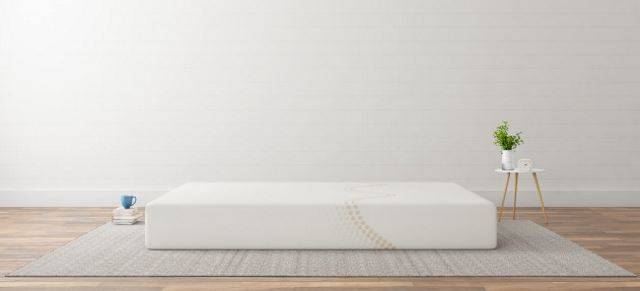
Amerisleep Americana 10" |
| |
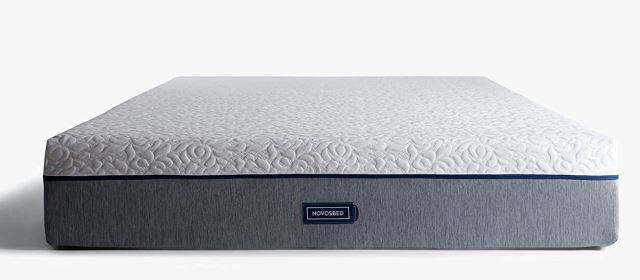
Novosbed |
| |
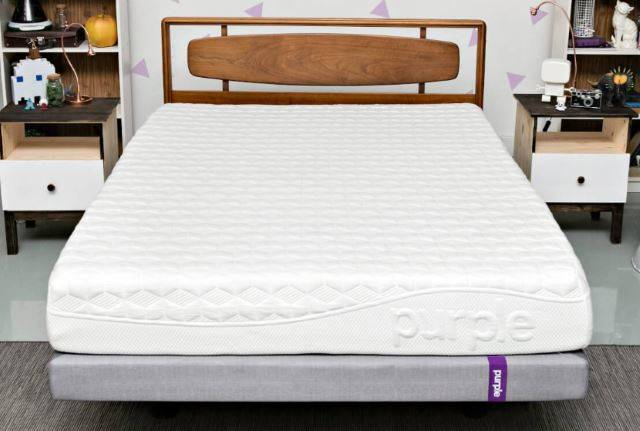
Purple Mattress |
| |
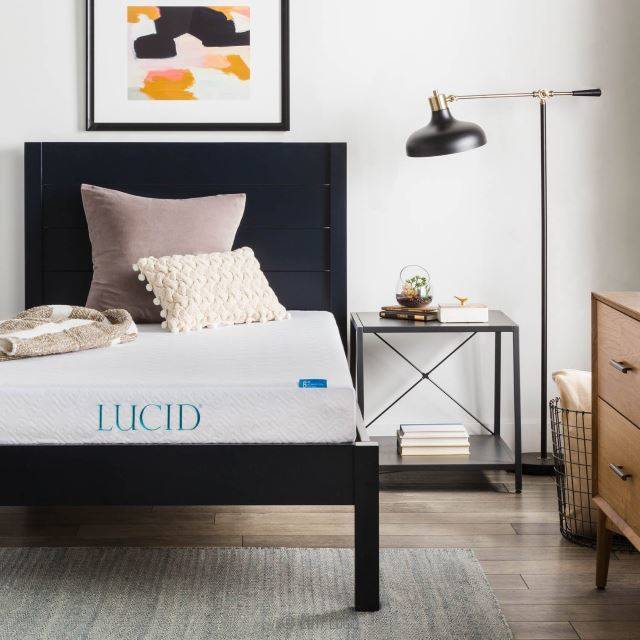
Lucid 6 Inch Memory Foam Mattress |
| |
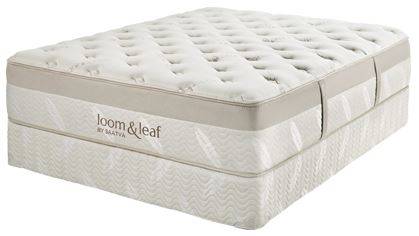
Loom and Leaf Firm Mattress |
|
Who Needs a Memory Foam Mattress
The short answer to that question is: anyone who wants a comfortable bed. Memory foam beds come in a variety of blends, thicknesses, layers, and densities. If a traditional innerspring mattress just isn't cutting it anymore, it may be time for you to make the switch to memory foam.
If you're concerned about the bad rap that foam mattresses get for sleeping hot, you can consider a gel-infused memory foam mattress, which offers a cooler option. Gel, in either liquid form or bead form, is mixed into the foam as its being formed to create pockets of cooling and added air circulation.
Once upon a time, you didn't have as much choice in mattresses – it was a traditional coil innerspring mattress, or a pile of hay. When memory foam was created for NASA purposes, it soon became available to consumers, and people loved it! However, after a few months or years of sleeping on a foam mattress, some people ran into a few problems, such as sagging or reduced responsiveness.
If you've decided that you'd be more comfortable sleeping on your floor, you might just need to shop for a firmer mattress. A too-soft mattress can make it feel like you're sinking and bottoming out onto your floor anyway, and even feel as though you must climb out of a chasm when you get out of bed. There is a solution.
Why Needs the Firmness Matter?

A firm, or even extra firm, memory foam mattress may be more comfortable than whatever you're sleeping on now – for many reasons. A firm bed is a good choice for those who sleep on their back or stomach. Back sleepers benefit from the molding of memory foam, but you want strong support to keep from creating a crater in your bed. Stomach sleepers could find a too-soft bed to be suffocating, or feeling as though their spines are bowing inward.
And then there's the matter of those who are a bit heavier. A memory foam mattress may seem like a pipe dream because you know what happens when you lay down: you sink and don't get the benefit of pressure-point relief.
Is there such thing as a too-firm mattress? Sure. If you sleep in five different positions, or you're usually a side sleeper, you may find a firm mattress uncomfortable. A firm mattress may not cushion your hips and shoulders as much as you need or like. Other than laying on a mattress or believing the manufacturer when it says a mattress is soft, medium, medium-firm, firm, or extra-firm, you can check the ILD rating – if it's available.
ILD Rating: What Does It Mean?
The Indentation Load Deflection, or ILD rating, is the measurement of how soft or firm foam is. It's used to describe how many pounds of pressure would be needed to make an indentation of 25% of a 4-inch thick piece of foam in 50 square inches. Generally, you'll find memory foam mattress with an ILD rating in a wide range from 8 to 150, with the average being around 14 to 44.
To make sense of this, consider this example: A mattress with a 40 ILD rating requires 80 pounds of pressure to create an indentation by 25% of an 8-inch thick piece of memory foam. If that seems like you'd need a 16-inch thick foam mattress to not sink to the middle of your bed, well, there's more to it than just the ILD rating. You also need to consider the density of the foam, but that's less about the firm feel and more about the life of the foam, but it's still related.
Foam density is typically listed in pounds, which is usually somewhere between 2.5 and 7 pounds. High density memory foam mattresses are obviously going to have a higher number. While this may seem cut and dried – a mattress with an ILD rating of 40 and foam density of 4 lbs. seems like a good choice – but you also have to consider the layers of the mattress.
Not every mattress company is forthcoming with their ILD rating and density of foam, so you may have to make an educated guess, or test out a few mattresses to find one that's just right for you.
What to Look for in a Firm Memory Foam Mattress
Aside from looking for a mattress that's listed as firm, you should look at certain features, ratings, and reviews that talk about how the mattress feels when you sleep on it. Here's a handy list of those considerations:
- ILD Rating – 40+
- Foam density 4 lbs.+
- Cooling features, such as gel or latex layers
- Closed cell structure (but could retain too much heat)
Although these factors can help you determine whether you're buying a firm mattress made of high-quality dense foam, not all ILD ratings and densities are created equally. Plus, while a manufacturer intends to produce memory foam with a 40 ILD, it could fluctuate by a couple points, due to the nature of how memory foam is made – it's why you'll sometimes see a range (38-40 ILD). If all of this seems confusing, what you should focus on then is a good memory foam mattress comparison, which we have below.
Top 5 Best Firm Memory Foam Mattress Reviews
Amerisleep Americana 10" Natural Memory Foam Mattress, Queen
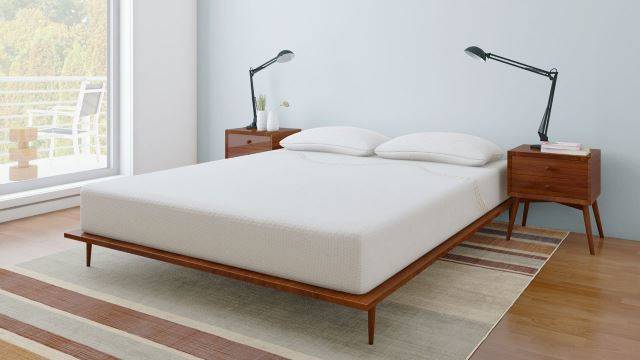
Back and stomach sleepers may find that this Amerisleep Americana memory foam mattress is exactly what they were looking for. This mattress is made of three different layers. The core layer is thick, and the manufacturer claims it is sag-free, which is good news for heavier users who worry about creating a crater in a memory foam mattress.
The Bio-Pur foam layer is thinner and softer, but this is the comfort layer that also offers the breathability you need in a memory foam bed. It allows for more air circulation so you have a cooler sleep each night.
If you're environmentally-conscious, this might be a good choice for you because Amerisleep uses eco-friendly materials, and they process their foam using zero emissions – meaning the company meets Clean Air Act standards. Bottom line, though, is that this mattress is firm enough for back and stomach sleepers, and those who are a bit heavier.
Pros
Cons
A firm mattress like this one from Amerisleep lets you rest on your back or stomach without feeling as though you're going to sink to the bottom of your bed - it's also a good choice for plush-sized sleepers.
The Novosbed (Firm), Queen

Three layers of memory foam make up The Novosbed, a memory foam mattress that offers three levels of firmness. In this firm choice, you get an 11-inch thick mattress that has minimal sink-in. What this means is that it's a suitable choice for you if you prefer to sleep on your back or stomach. It's also a good choice for plus-sized people who may find memory foam too soft and worry about "bottoming out." The core layer is strong and supportive, while the other two layers are made to provide comfort as you sleep.
If you find that your mattress is too firm and uncomfortable, you can take advantage of the extra comfort layer that's a 2-inch thick soft piece of memory foam that you can add to your mattress. One disadvantage is that this will raise your mattress to 13 inches, and you may need to use deep pocket sheets to fit.
You shouldn't notice a harsh smell, or off gassing, when you first receive your mattress, which is a plus. Also, the removable cover is washable, as well, so you can safely remove it and toss it in your washing machine whenever you need to, which helps keep allergens at bay. Perhaps one of the biggest downfalls of a memory foam mattress is that it can sleep a bit hot.
Pros
Cons
The Novosbed is a suitable choice for those who are on the heavier side and prefer to sleep on their back.
Purple Mattress, Queen

One of the best rated memory foam mattresses available today is the Purple mattress. Surprisingly, you don't get a choice between soft, medium, or firm. This is meant to be a one-size-fits-all solution with the support needed for those who prefer to sleep on their back or stomach, and the comfort you want, especially for side sleepers.
The difference between this mattress and other foam mattresses is in the processing of the materials, which creates a more open structure, which allows for more air circulation. The more air circulation, the cooler you'll sleep at night.
Perhaps an odd point, but important nonetheless, the Purple mattress is on the smaller side. It's about 9.5 inches tall, and about half an inch smaller in length and width. It's possible you'll notice your sheets slipping off, which is probably why the manufacturer suggests you use sheets that are elasticized all the way around. You may also notice that this memory foam mattress offers less motion isolation than you're used to with traditional foam beds.
Pros
Cons
This is a good choice if you're looking for a firm mattress, but you still want a slight plushness on top.
Lucid 6 Inch Memory Foam Mattress, Queen

One of the most affordable choices among firm memory foam mattresses is this Lucid 6-inch mattress. Yes, it's a thinner mattress, but that makes sense for someone who isn't looking for plushness, like you find in 10-, 12-, 14-inch mattresses. Just because it's thinner at 6 inches, doesn't mean that Lucid doesn't realize that memory foam sleeps hot. To combat that, the company includes a gel-infused memory foam layer that allows for more air flow.
The low-profile design makes it a good choice for RVs, campers, and bunk beds – though a queen size probably isn't a good choice for a bunk bed. It's important to have a firm foundation for this mattress, or you may notice ridges forming.
You don't get a lot of time to test out this mattress to decide if you like it or not – 30 days, to be precise. Lucid doesn't reveal its ILD rating or density weights of each layer, but it ensures that the core layer is dense foam, which helps provide support and durability.
Pros
Cons
This Lucid mattress has a lower profile than most mattresses, which makes it a good choice for RVs and campers who want a firm mattress at an affordable price.
Loom and Leaf Firm Mattress, Queen

Loom and Leaf is banking on their high-quality, high-density memory foam mattress as being one of the best. You get two choices when shopping their mattresses: relaxed and firm. To the manufacturer, the relaxed firm level is that Goldilocks choice – it's supposed to be "just right." However, you may not enjoy that soft topper feeling.
The firm mattress choice is good for anyone who prefer to sleep on their back or stomach because you won't get that sinking in feeling. It is memory foam, though, so you'll likely notice a bit of that molding feeling. What you do get is the spinal support you're looking for, so says the maker of this mattress.
Like most memory foam mattresses, this one isolates movement, so you're unlikely to notice when your partner tosses and turns, or gets up in the middle of the night. The company isn't all that transparent with its mattresses' specifications. High-density foam should be long-lasting, but without more information, it's hard to determine what the longevity of this mattress is.
Pros
Cons
Unless it's important to you to know the ILD rating of your mattress, this could be a good choice for you, back and stomach sleeper.
Conclusion
One of the best features of all these firm memory foam mattresses is that you have some time to try them out to make sure you're satisfied.
Related Posts
Solaire Mattress Review
Sapira Mattress Review
Bear Mattress Review
REM-Fit Mattress Reviews
Winkbed Mattress Review
Brooklyn Bedding Mattress Review
Layla Mattress VS Bear Mattress: Which One is the Best for You?
Best Box Spring for Tuft & Needle
